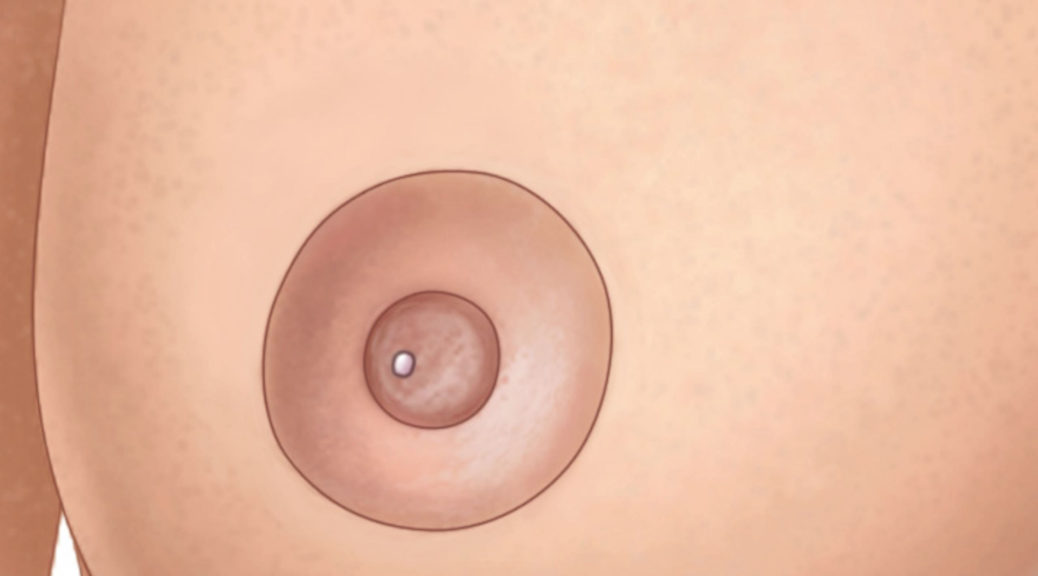
Blebs, spots and milk blisters on the nipple and breastfeeding
Did you know that milk blisters or blebs, red spots, black spots, or blisters can also occur on nipples during your breastfeeding journey?
Whether they are transparent blisters or white spots, having any of these annoying situations means something can be avoided or improved. In this article, you can find out what you could be having on your nipple and how you can fix it.
Infection spot
If the spot that appears on your nipple is irregular, poorly defined, deep, and yellowish, we can suspect that it may be a blister or bleb due to an infection.
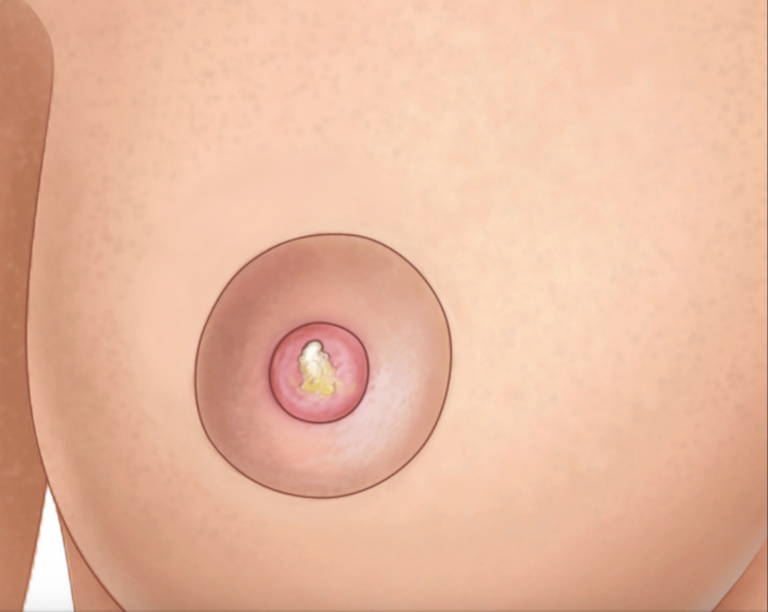
This type of spot usually appears before or after an obstruction or mastitis. It is usually the tip of the iceberg that tells us that something else is going on in the ducts. Usually, a variable amount of dead cells and calcium are retained behind the nipple pore and block the duct’s exit.
This causes a sharp, very annoying pain and a burning sensation, which can radiate all the way to the back.
It is best not to touch or prick these blisters because they are so deep that any intervention can worsen the situation.
Make sure you see your midwife, IBCLC, or healthcare professional as soon as possible so they can check what may be happening and offer you support and information to solve any difficulties you may have.
Pulling blister
Pulling blisters are different from the previous ones. They are round, superficial, and very white.
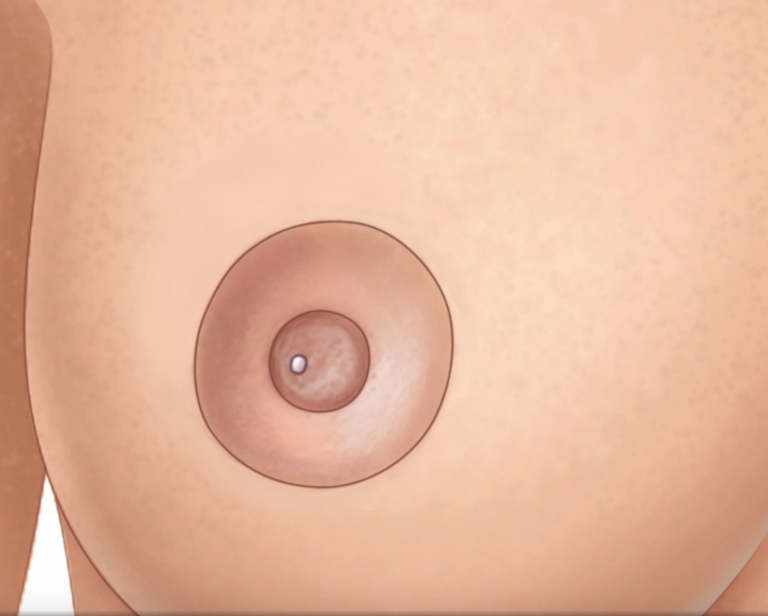
We call them pulling blisters because they can usually happen when the baby has closed the mouth with the nipple inside or has been pulling to see what happens without unlatching from the breast.
This blister type is caused by a small swelling in the ducts just behind the nipple where some breast milk is retained. The water in the milk is reabsorbed, but the fat and calcium in the milk are not, forming a thick material that cannot flow out of the nipple.
This type of blister causes a very sharp pain, and many mothers describe it as intense and stabbing, like a pin pricking.
This type of blister, being on the surface of the skin, can be removed in several ways:
The first option is to wait. When the skin regenerates and falls off, the blister will also fall off, and the problem is over. This option has the disadvantage of requiring time, usually from 2 to 4 weeks. If the pain is not so intense, you can wait for this to happen.
For the second option, you need the help of your midwife or healthcare professional. Using a sterile needle, she can prick the blister carefully on the sides and lift the skin.
Another at-home option is to immerse your breast in a bowl of warm water or warm vegetable oil (it has to be a nice warmth), then after a few minutes, when it has softened a bit, rub a clean, dry towel that is a little rough, to try to get rid of the milk blister. This can be uncomfortable but is quite effective.
Once you have removed the blister, have your baby feeding at your breast immediately so all remains can be removed by suction.
Remember that in the following days, you should clean your nipple several times a day with water and neutral soap, then dry it with a paper towel or single-use gauze to prevent the area from getting infected.
Red or black blister
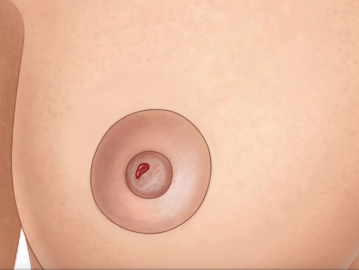
Both red and black blisters are two aspects of the same cause. They usually occur when the baby does not suckle well enough and creates something very similar to a “hickey” or “love bite”. That’s right, the same ones that happen when young adults leave marks on their necks in the heat of a passionate encounter.
A small blood retention, a little clot, is produced behind the nipple pore, which does not come out when the baby suckles.
For the first few days, the blood blister is red and very bright, but as the days go by, the blood degenerates and, like a bruise, becomes darker and ends up being black.
If it doesn’t hurt you, there is no reason to touch it and it will go away on its own. But if it bothers you, you can do the same as in the case of a pulling blister and remove it.
Transparent blister
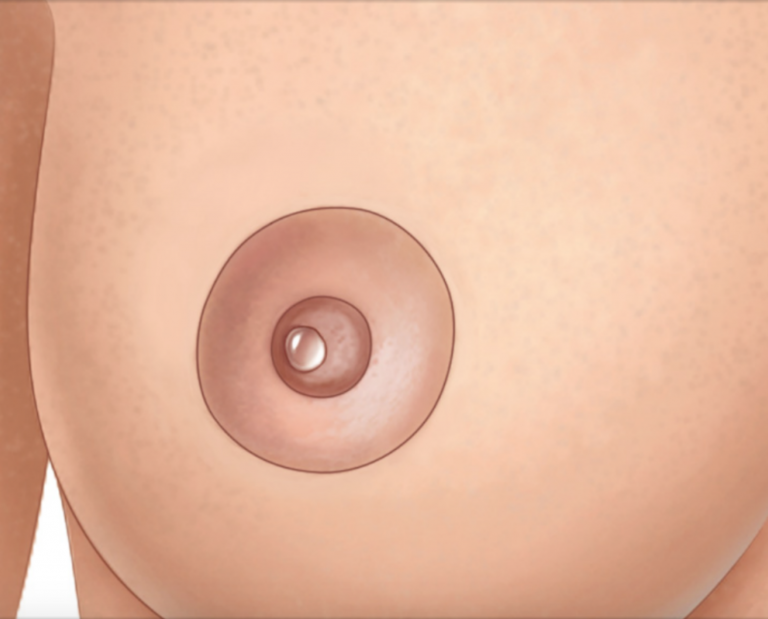
Transparent blisters are like the blisters you get on your feet when you wear new shoes. They are clear and have fluid inside.
These blisters happen when a baby sucks weakly. It usually occurs at night and happens when your baby only latches onto the tip of the nipple (more about latch here). This shallow sucking causes the nipple to rub against the roof of the mouth, and this friction creates a blister.
These types of blisters are the simplest to resolve, and usually, after the baby has suckled a little, they soften and open.
As with pulling blisters, it’s important that you keep good hygiene in the area during the following days to avoid infection.
To prevent them from reappearing, ensure your baby maintains a deep latch during nighttime feeds, and make sure you change your baby’s position if you feel any discomfort.
For possible discomfort or difficulties during breastfeeding, make sure you check with your midwife or IBCLC, who are the professionals of reference for breastfeeding. They will help you to check breastfeeding is going ok, the state of your breasts, and your baby’s development. And if you can, join your nearest breastfeeding support group, where you can share your experience with other mothers.